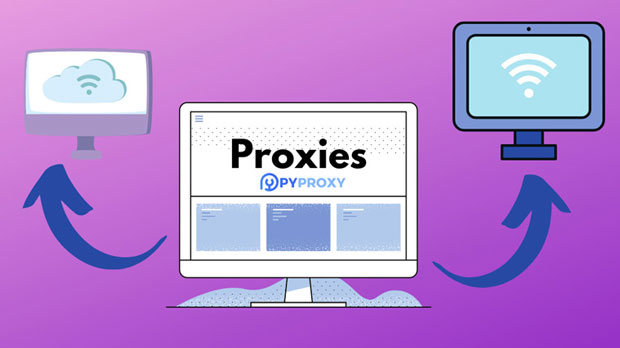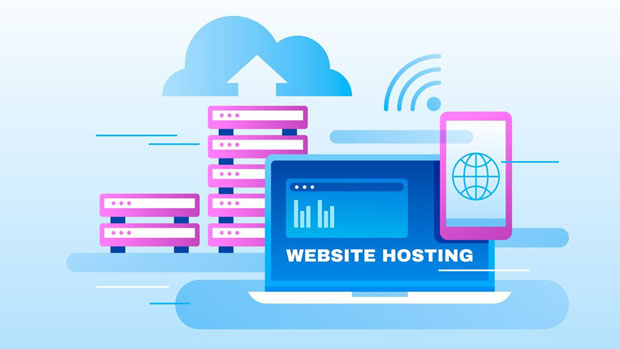In today’s digital world, the need for secure data transmission has become paramount. As websites and services move towards encryption, HTTPS has become the preferred protocol for secure communication. However, when it comes to performance, many wonder whether there is a significant difference between HTTP and HTTPS, especially in the context of proxy services like PYPROXY unblock. This article explores the performance differences between HTTP and HTTPS, focusing on how each protocol performs when using a proxy to bypass network restrictions or unblock websites. We will delve into the factors that affect performance and provide insights on how these protocols impact speed, security, and overall user experience. Understanding HTTP and HTTPSTo begin our analysis, it is crucial to understand the fundamental differences between HTTP and HTTPS. HTTP (HyperText Transfer Protocol) is the traditional protocol used for transmitting data over the web. It is a text-based protocol that does not encrypt the data being sent, making it vulnerable to interception and attacks. On the other hand, HTTPS (HyperText Transfer Protocol Secure) is an extension of HTTP that uses encryption protocols, such as SSL (Secure Socket Layer) or TLS (Transport Layer Security), to protect the data in transit. This encryption ensures that sensitive information remains private and secure.Impact of Encryption on PerformanceOne of the primary factors that affect the performance of HTTPS compared to HTTP is the encryption process. While HTTP transmits data in plaintext, HTTPS requires additional computational resources to establish an encrypted connection between the client and the server. This encryption process involves several steps:1. Handshake Process: In HTTPS, before any data can be transmitted, there is a handshake between the client and the server to exchange encryption keys. This handshake requires several additional round-trip communications, which can introduce latency.2. Encryption and Decryption: The actual data transmission in HTTPS is encrypted and decrypted at both ends, which requires additional CPU resources. Depending on the encryption strength, this can add some overhead to the data transmission process.As a result, HTTPS can be slower than HTTP in terms of raw data transfer speed due to the extra steps involved in ensuring security. However, this additional overhead is generally minimal with modern hardware and optimized encryption algorithms.PyProxy Unblock and the Role of ProxiesPyProxy is a Python-based proxy tool that allows users to bypass network restrictions, unblock websites, and ensure a level of privacy while browsing. The role of PyProxy in this context is to act as an intermediary between the user and the destination server. When using PyProxy to unblock websites, the performance differences between HTTP and HTTPS can become more pronounced.For HTTP traffic, PyProxy simply forwards the data between the user and the server, without the need for encryption. This means that HTTP traffic through PyProxy tends to have lower latency and faster performance overall. In contrast, when HTTPS traffic is routed through PyProxy, the proxy server must also handle the encryption and decryption processes. This adds a layer of complexity and could potentially slow down the overall speed, as the proxy server must decrypt the incoming data from the client, process the request, and then re-encrypt the response from the destination server before sending it back to the user.Latency and Speed: HTTP vs. HTTPS with PyProxyWhen it comes to real-world performance, latency and speed are two critical factors that differentiate HTTP from HTTPS, especially when using a proxy like PyProxy.1. Latency: The handshake process involved in establishing an HTTPS connection adds an initial delay compared to HTTP. With HTTP, the client can send the request directly without waiting for the exchange of encryption keys. In contrast, HTTPS requires additional time for key negotiation and secure communication establishment, which results in higher latency. The presence of a proxy like PyProxy can amplify this delay because the proxy needs to handle the decryption process and re-encrypt the data before forwarding it.2. Throughput and Bandwidth: The bandwidth consumption for HTTPS is higher compared to HTTP due to the encryption overhead. While HTTP is simply transmitting raw data, HTTPS encrypts that data, leading to larger data packets and potentially slower throughput. The use of PyProxy for HTTPS traffic can further reduce throughput since the proxy must decrypt and re-encrypt the data, adding more processing time.However, in most practical scenarios, the speed difference between HTTP and HTTPS may not be significant, especially with modern proxy servers and hardware acceleration techniques. The impact of encryption on performance becomes less noticeable as servers and proxies optimize their processing capabilities.Security vs. Performance Trade-offsWhile HTTPS introduces performance overhead, it provides an undeniable advantage in terms of security. The decision to use HTTP or HTTPS, particularly in the context of proxy services like PyProxy, often involves a trade-off between security and performance.1. Security Considerations: HTTPS ensures that sensitive data, such as login credentials, financial information, and personal details, are encrypted during transmission. This is critical in today’s threat landscape, where data breaches and interception are common. The security provided by HTTPS is essential when browsing sensitive websites, even when using a proxy.2. Performance Considerations: While HTTPS can slow down the browsing experience due to the encryption overhead, the impact on performance may not be noticeable for most users, especially when using fast proxy servers. For general browsing, the security benefits of HTTPS typically outweigh the slight performance reduction.Optimizing PyProxy for HTTPS TrafficThere are several strategies that can help optimize PyProxy performance when dealing with HTTPS traffic:1. Caching: PyProxy can be configured to cache certain elements of the HTTPS response, reducing the need for repeated decryption and re-encryption processes. By serving cached data, the proxy can improve the response time for frequently visited websites.2. Hardware Acceleration: Modern hardware acceleration techniques, such as using dedicated cryptographic processors or offloading encryption tasks to specialized hardware, can reduce the performance overhead associated with HTTPS encryption.3. Proxy Server Optimization: Choosing a well-optimized proxy server capable of handling large volumes of encrypted traffic efficiently can reduce latency and improve overall performance. Servers with optimized SSL/TLS handling can speed up the encryption and decryption processes.4. Load Balancing: Distributing traffic across multiple proxy servers can help ensure that no single server is overwhelmed with too much encrypted traffic, which can help maintain stable performance even under high loads.In conclusion, while HTTPS provides essential security benefits, it does come with a performance trade-off due to the added encryption overhead. When using a proxy service like PyProxy to unblock websites, HTTP typically offers better performance due to its lack of encryption, while HTTPS introduces additional latency and processing time. However, with modern hardware and optimization techniques, the performance differences between HTTP and HTTPS have become less pronounced. For users prioritizing security, the slight performance reduction of HTTPS is often a worthy trade-off, as it ensures the privacy and integrity of sensitive data.Ultimately, the decision to use HTTP or HTTPS with PyProxy will depend on the user’s specific needs, balancing the need for speed with the need for security.
Oct 20, 2025



































































